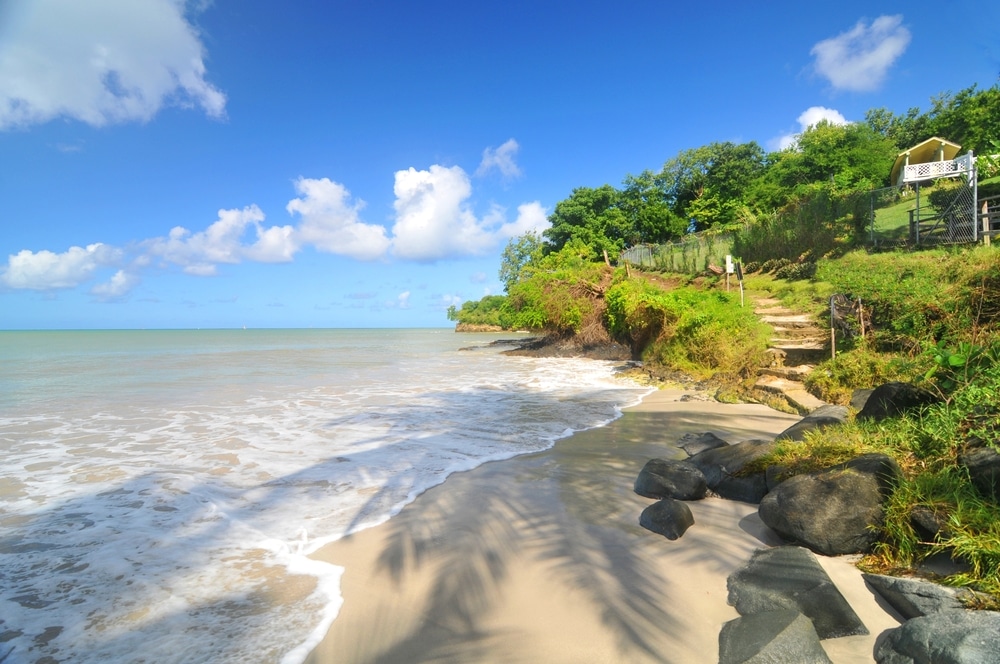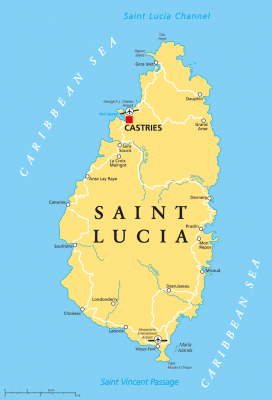
St. Lucia is heaven on earth. Here you can look forward to an incredible mix of nature and fantastic beaches. Anyone who has ever been to St. Lucia will certainly visit the Caribbean island again. St. Lucia is characterized by picturesque landscapes that can convince with their rich, green color and enchanting nature. Fantastic beaches and a tropical climate all year round are also convincing.
The island is also a very popular holiday destination in winter. You can also discover hidden bays, the wide sea and particularly hospitable people. You can also look forward to culinary highlights.
Facts about Saint Lucia
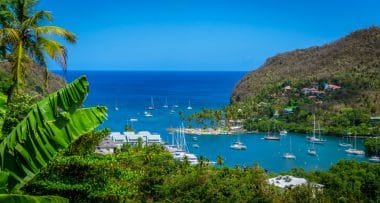
St. Lucia belongs to the Lesser Antilles and is located between the islands of St. Vincent, Martinique and the Grenadines. Around 30 percent of the island is covered with tropical forests. In addition, the island is surrounded by a long coastline that covers around 158 kilometres. Mount Gimie is the highest elevation in St. Lucia at 950 meters. The two inactive volcanoes called Gros Piton and Petit Piton are located in the south of the Caribbean island and are considered the most famous peaks on the island. It and the nature reserve that surrounds it are a UNESCO World Heritage Site.
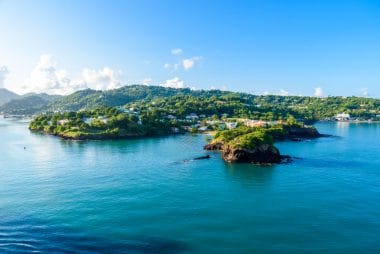
There are many sulphur springs on the island, such as the so-called Sulphur Springs and craters. These prove the volcanic origin of St. Lucia. The island’s flora and fauna are also among the most species-rich in the Caribbean. The abundance of water is just as extraordinary. St. Lucia owes the many waterfalls that can be discovered here to him.
The island nation is independent and a member of the Commonwealth of Nations. The population is around 172,900. About 11,200 people live in Castries, the capital of the island. Tourism is the most important economic factor today. The export of agricultural products such as rice, flour and bananas is also a decisive economic factor.
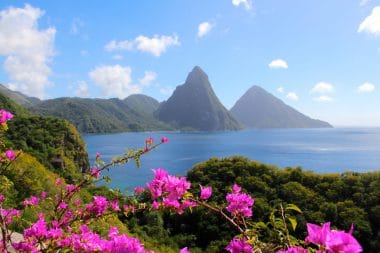
By the way, Germans, Swiss and Austrians can travel to the island for up to 90 days without a visa. A passport that is valid for at least 6 months is required. You also need a return ticket.
In St. Lucia, the official language is English in any case. However, the majority of the inhabitants speak the so-called patois, which is a creole language, in everyday life.
The climate of St. Lucia
St. Lucia has a tropical climate. So you will find very pleasant temperatures between 25 – 30 degrees Celsius all year round. The water temperature can score with about 26 degrees Celsius. From June to November, the island is in the summer time. Increased precipitation is then to be expected. The winter dry season is from December to May and is considered the best time to travel.
Sights
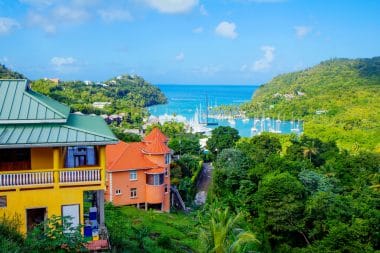
The island has numerous sights to discover. Not only the landscape alone can be admired on St. Lucia.
Castries
The capital Castries is always worth a visit. The harbour and many interesting places can be visited in the old town.
For example, the famous Cathedral of Castries is one of the most popular sights on the island. The Morne Fortune fortress is also a must-see!
Soufrière
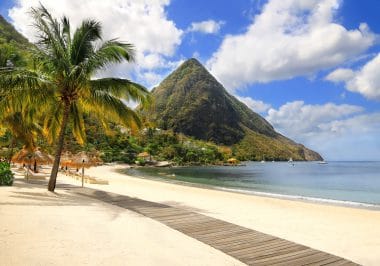
Soufrière is the first French settlement in St. Lucia. Located at the foot of the Pitons, it boasts a black sand beach and is considered the gateway to the island’s natural wonders. In the background of the city is a volcanic crater. This is called the only so-called drive-in volcano in the Caribbean . The crater, which is called a paradise at Marigot Bay, looks like a lunar landscape.
Gros Islet
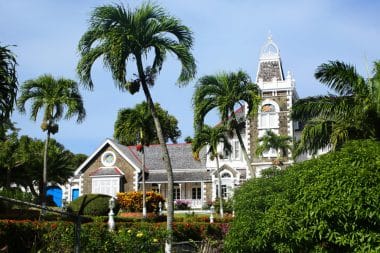
The small fishing village can convince with its breathtaking nature. In addition, you can follow the historical traces of the island, which has an exciting story to tell. The small village often served as a hiding place for pirates and later even became a military base.
Plantations
The island is also known for its cocoa bean harvest. Here you will find many plantations that can also be visited. In this way, you can get an idea of the hard work of the harvest for yourself. Delicious chocolate is served by the way…
Flora and fauna in St. Lucia

The flora and fauna should also be taken into account. It is above all the untouched nature of the island that makes it so popular and exudes a very special magic. Due to the tropical climate, you can look forward to a diverse and particularly lush flora. This is very similar to the flora of Martinique.
Mango and banana trees, coconut palms and goyave trees can be found in great numbers. Different plants from all over the world were introduced. Some of them also come from distant countries such as India, from where the tamarind tree was introduced.
The bread tree, on the other hand, originally comes from Tahiti.
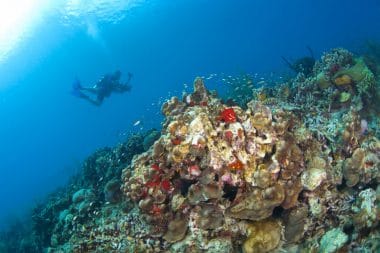
Diving fans and bird lovers in particular get their money’s worth on St. Lucia.
For example, you can find many different bird species on the island, such as parrots, which are threatened with extinction. The underwater world is also impressive.
St. Lucia is one of the most beautiful and popular islands in the Caribbean. The island can convince with its impressive landscape, the flora and fauna, the hospitality of its inhabitants and the many plantations. St. Lucia is definitely worth a visit and promises its visitors an unforgettable adventure!


